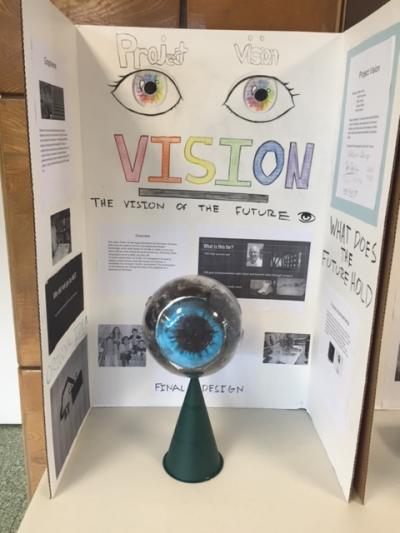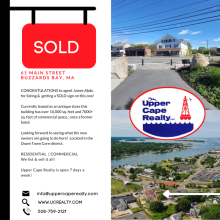Dartmouth Middle School competes in science, technology convention
Dartmouth Middle School students competed against students from several cities earlier this month in a Bridgewater State University program that provides teams of sixth-, seventh-, and eighth-graders with the materials to invent anything they want and build a prototype.
Technology Engineering Teacher Pam Glass, with the assistance of a mechanical engineering student from UMass Dartmouth, led three Dartmouth teams in the Project Invention Convention XII. The final projects were “No Pollution is the Solution,” “Project Endor,” and “Project Vision.”
“This is the twelfth year I have participated in Project Invention and I never cease to be amazed by the innovative inventions the students come up with,” said Glass via e-mail. “This year they came up with 39 inventions and dwindled it down to five then three.”
“No Pollution is the Solution”—researched, designed, and built by Cade Helmes, Cloey Narciso, Jacque Mendes, and Andrew Viega—won the Best Use of Technology award. “[It] started out as artificial photosynthesis and morphed into a self-sufficient hydrogen fuel cell car, which is totally pollution free to operate,” said Glass.
“Project Endor” is a solar-powered hovercraft. Students Katelyn Pimenta, Jenniver Scott, and Chad Estes examined the high level of carbon emissions from vehicles, and with a little Star Wars inspiration, created the smooth, air-cushioned ride that aids pollution control, and is comfortable for both handicapped and able-bodied passengers.
Students William Fang, Chance McNeil, Noah Aungst, Jaffa Heryudono, and Robyn Holmes were inspired by a concern that military personnel carry too much equipment. “Project Vision” is a pair of night-vision contacts with thermal imaging capabilities, allowing servicemen to opt out of heavy gear.
The teams presented to five judges and 18 other teams from New Bedford, Brockton, Foxboro, Bridgewater, Walpole, and Weymouth at the Dana Mohler-Faria Science & Mathematics Center on the BSU campus.
The program started 12 years ago when BSU’s Mary Price received a grant for Project Invention, said Glass. “After the grant, she worked with BSU to continue to offer the program.”
Each team gets up to $500 for their project, but the three Dartmouth teams totaled $750 for their projects. After the science fair, BSU provides students with a Project Invention XII T-shirt, lunch bag, certificate, and participation medal.
Glass—with eight years experience as a mechanical engineer before becoming a teacher—said it was a great experience because of the unlimited learning opportunities.
“They often get into areas that I have never worked in, so we learn together or they teach me,” she said. “They are not limited in what they invent. Students are required to do research on the history of their technology, how their project functions scientifically and technologically, and how future technologies will help to improve their invention.”
All students researched, designed, problem solved, and constructed and tested their projects before giving a group oral presentation.
"They meet once a week for ten weeks for an hour in the fall and spring, and then they work April once a week and then May two to three times a week after school," said Glass. Altogether, they put in about 35 after-school hours.
Ahern Middle School, Foxboro, won “Most Likely to be Marketed” for its “Sun & Solar Beach Umbrella” project; Chapman Middle School, Weymouth, won an honorable mention for “Make it Rain”; Bird Middle School, Walpole, took third place with its “Marshmallow Man” project; East Middle School, Brockton, won second place for its“Cropter” project; Johnson Middle School in Walpole received the first place prize for its “Moon Lit” project.
The Project Invention Convention XII took place on June 8, 2016.












